
|
The world of non-commercial film and A-V |
Events Diary | Search | ||
| The Film and Video Institute | | ||||
The making of Afars
Afars got a 4-star award at BIAFF 2008.
 |
Jean-Pierre Hué is passionate about living with and learning about other cultures. His film 'The Better the Harvest' won 'Best film in Festival' at the Guernsey Lily 2005 and a Gold Award at BIAFF 2005. Jean-Pierre was also one of the founder organisers of FIFA, the international wildlife film festival held in Albert, France each year. |
The Afars are an ethnic group who live mainly in the Danakil desert in Ethiopia, in Eritrea and Djibouti. They are nomadic pastoralists but for centuries they have also lived by selling salt. Jean-Pierre travelled to Ethiopia to film the lives of the Afar people who cut salt and transport it by camel caravans from Lake Assal. The Lake is the most saline body of water on Earth, surrounded by salt pans. Nothing grows there. There is just searing heat and wind.
Afars
The idea for this film began two years before the trip. I wanted to show the life of the salt caravaneers in the area of the sulphur springs, but I did not know that the sulphur springs were not that close to the salt cutting area. I had to modify the scenario on the spot, knowing that the images of sulphur did not really connect much to the main subject of the film. (I realise now that the two do not need to be integrated...). I wanted to film more of the private lives of the caravaneer and the salt cutter, but health problems forced me to return early to the large town of Mekele, which was two days ride in a 4x4.
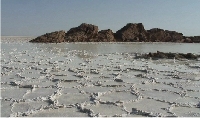 |
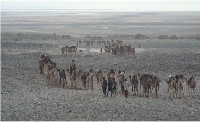 |
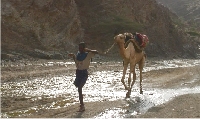 |
It took two days in a 4x4 to get from Addis-Ababa to Berhalé, the entrance to the Danakil desert, then two days by foot following the caravan through the gorges. Shooting lasted only four days: two in the gorges and two on the lake. I had to negotiate with the Afars authorities for a few hours to obtain the services of Bella, the old guide and to agree reasonable baksheesh (100 euros), and was obliged to take along two adolescent, inexperienced and happy-go-lucky soldiers. This precaution was more diplomatic than useful, but the Afars make a point of marking their identity within the borders of Ethiopia in this way, in an area where they assert their independence from the territory of Djibouti and from Eritrea.
I was helped on the spot by an Abyssinian guide who knew the area perfectly and had connections with the local powerful men. I had complete confidence in him and could devote myself fully to shooting the film. At each "stage" (walking in the gorges, meetings in the villages, halts, departure towards the salt cutting site) I felt this happiness which always infects me when I move towards the unknown.
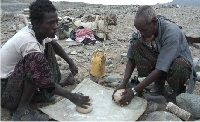 |
 |
 |
When one lives closely for several days with strangers, and under such special conditions, it spontaneously creates a climate of complete confidence, a real closeness and very strong bonds of friendship. The caravaneers and the inhabitants of the village had little concern about my presence and let me move about with complete freedom. Each evening was celebratory, always around a good fire and in good spirits. All the provisions had been bought at the market in Addis-Ababa, except the bottle of Scotch whisky (Talisker bought in France and no doubt bottled on the Island of Sky?).
I shot three hours of film with a small Sony HDV A1E camera. I had brought a rather cumbersome tripod and an electric light supplied by a very heavy battery, but in practice it did not serve any purpose. Wind was always the trickiest problem as it blew all the time, and in spite of the windshield on the microphone, I had to almost completely remake the sound track and to abandon the majority of the interviews. It was also necessary to watch for salt water splashes while following the caravan on the lake, but it was the 4x4 that suffered. The driver, an excellent mechanic, put up with it very well.
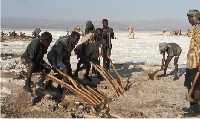 |
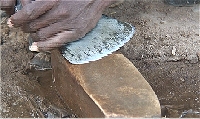 |
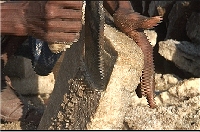 |
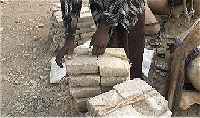 |
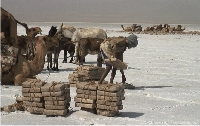 |
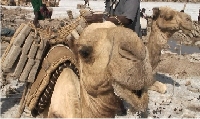 |
Having returned to Addis Ababa earlier than planned, I used the time there to write the commentary and to prepare the rough edit.
One month after my return, some European tourists were kidnapped together with eight Ethiopians, in the village of Hamadela, at the hut where I had stayed. The European hostages were released after one week. A month and a half later, there was still no news of the Ethiopian ones. My guide then contacted me to ask for the help of the French embassy in Addis-Ababa, because one of the hostages was Hussein, the salt cutter. Everyone thought that the kidnappers were Eritrean (who usually do not release Ethiopian hostages). I intervened symbolically. Meanwhile, the hostages were all released. The kidnappers were in fact Afars freedom fighters who wanted to be heard.
Jean-Pierre Hué , France 2008
Share your passions.

Share your stories.